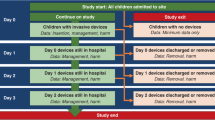Abstract
Purpose of Review
The purpose of this review is to demonstrate the usefulness of universal Luer-type connector systems, and through analysis of case reports, we highlight the wrong-route medication errors that have occurred because of misconnections of these universal connectors. We will also describe new legal remedies that have attempted to improve patient safety and prevent wrong route medication errors.
Recent Findings
We present the new 80369 small bore standards created by the International Organization of Standards and describe the new connectors devised for enteral and neuraxial connectors.
Summary
In the future, health-care workers worldwide will use different types of connectors for different entry routes such as intravascular, enteral, neuraxial, respiratory, limb inflation, and urinary equipment. As of 2017, new types of connectors for enteral administration have been introduced, and neuraxial administration connectors are expected within the next year or two. Advantages and disadvantages of these connectors will be uncovered with increasing use by patients and anesthesia providers.



Similar content being viewed by others
References
Papers of Particular Interest, Published recently, Have Been Highlighted as: • Of Importance •• Of Major Importance
Brown J. Life and Death of the Luer. MDDI, MDDI Medical Device and Diagnostic Industry News Products and Suppliers. 2012. http://www.mddionline.com/print/9531. Accessed May 12 2016.
•• FDA. Preventing Tubing and Luer Misconnections. 2015. http://www.fda.gov/MedicalDevices/Safety/AlertsandNotices/TubingandLuerMisconnections/default.htm. Accessed June 16, 2016. This FDA Alert provides an excellent overview of the different types of misconnections that may result in harm. Be sure to click on the Examples link.
ECRI. Top 10 health technology hazards for 2011. Health Devices. 2010;39(11):393–4.
The Joint Commission. Tubing Misconctions—A Persistent and Potentially Deadly Occurence. Sentinel Event Alert. 2006(36).
Haynes J, Bowers K, Young R, Sanders T, Schultz KE. Managing Spaghetti Syndrome in Critical Care With a Novel Device: A Nursing Perspective. Critical Care Nurse. 2015;35(6).
Simmons D, Symes L, Guenter P, Graves K. Tubing misconnections: normalization of deviance. Nutr Clin Pract. 2011;26(3):286–93.
Harris G. U.S. Inaction Lets Look-Alive Tubes Kill Patients. The New York Times 2010.
Döring M, Brenner B, Handgretinger R, Hofbeck M, Kerst G. Inadvertent intravenous administration of maternal breast milk in a six-week-old infant: a case report and review of the literature. BMC Research Notes. 2014;7(17):1–4.
Singh S, Rejai S, Antongiorgi Z, Gonzalez N, Stelzner M. Misconnections in the critically ill: injection of high-dose gadolinium into an external ventricular drain. A&A Case Reports. 2016;6(5):121–3.
Reddy GK, Brown B, Nanda A. Fatal consequences of a simple mistake: how can a patient be saved from inadvertent intrathecal vincristine? Clin Neurol Neurosurg. 2011;113(1):68–71. doi:10.1016/j.clineuro.2010.08.008.
D'Addario A, Galuppo J, Navari C, Schultz M, Cuello N, Troncoso JC, et al. Accidental intrathecal administration of vincristine. Am J Forensic Med Pathol. 2010;31(1):83–4. doi:10.1097/PAF.0b013e3181c21c10.
Townley KR, Lane J, Packer R, Gupta RK. Unintentional infusion of phenylephrine into the epidural space. A&A Case Reports. 6(5):124–6.
Beckers A, Verelst P, van Zundert A. Inadvertent epidural injection of drugs for intravenous use. A review Acta Anaesthesiol Belg. 2012;63(2):75–9.
•• Birnbach DJ, Brull SJ, Prielipp RC. J'Accuse! Failure to prevent epidural and spinal catheter misconnections. A&A Case Reports. 2016;6(5):107–10. This editorial summarizes wrong-route medication errors and calls for mechanisms to prevent wrong-route medication errors.
Gelb AW, Mainland P, Phillips P, Sharpe P, Kinsella SM, Bailly AL, et al. J'agis! Anesth Analg. 2016;123(3):798–9. doi:10.1213/ANE.0000000000001428.
•• FDA. Medical Device Safety: Examples of Tubing and Luer Misconnections. http://www.fda.gov/MedicalDevices/Safety/AlertsandNotices/TubingandLuerMisconnections/ucm313275.htm. This FDA alert provides many helpful pictures and diagrams that demonstrate how wrong-route errors occur.
•• California So. Assembly Bill No. 444, Chapter 198. An act to amend Section 1279.7 of the Health and Safety Code, relating to health facilities. 2015. This is the bill passed by the legislature of the State of California preventing the interconnection of medical tubing.
Sentinel Event Alert. 2014. http://www.jointcommission.org/assets/1/6/SEA_53_Connectors_8_19_14_final.pdf.
ISMP. Update on Implementation of the New ENFit Enteral Connector. Acute Care ISMP Medication Safety Alert 2015.
ISMP. Another twist in the ENFit implementation process. Acute Care ISMP Medication Safety Alert. 2016;21(8):4.
• Bledsoe S, Oschman A, Hampson K, Hoebing W, Pabst D. Transition to ENFit enteral devices: special challenges for pediatric institutions. Am J Health Syst Pharm. 2016;73(21):1781–3. doi:10.2146/ajhp150410. This article summarizes the current state of use of ENFit connectors in pediatric patients.
Author information
Authors and Affiliations
Corresponding author
Ethics declarations
Conflict of Interest
Victoria I. Smith and Ronald S. Litman declare they have no conflict of interest.
Human and Animal Rights and Informed Consent
This article does not contain any studies with human or animal subjects performed by any of the authors.
Additional information
This article is part of the Topical Collection on Pediatric Anesthesia
Rights and permissions
About this article
Cite this article
Smith, V.I., Litman, R.S. Staying Connected: How to Prevent Wrong Route Medication Errors in the Operating Room. Curr Anesthesiol Rep 7, 119–124 (2017). https://doi.org/10.1007/s40140-017-0205-x
Published:
Issue Date:
DOI: https://doi.org/10.1007/s40140-017-0205-x




